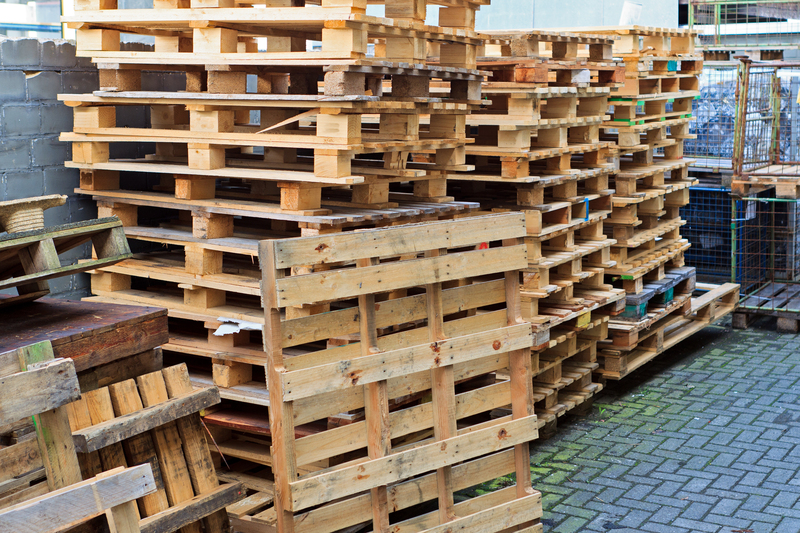Building Good Habits in PPE Waste Disposal: A Comprehensive Guide
The global appreciation for Personal Protective Equipment (PPE) has soared in recent years, especially due to pandemics like COVID-19. Yet, with increased usage comes the need for proper PPE waste disposal habits. This article delves into building good habits in PPE waste management for individuals, organizations, and communities. By following these best practices, we help protect both our environment and public health.

Why Proper PPE Waste Disposal Habits Matter
Before diving into how to cultivate strong PPE disposal habits, let's explore why PPE waste disposal is crucial:
- Environmental Impact: Improper disposal leads to pollution of land, waterways, and oceans with non-biodegradable materials.
- Health Risks: Exposed PPE waste can spread infections and diseases, endangering both sanitation workers and the general public.
- Regulatory Compliance: Many countries have strict guidelines for PPE disposal, fines for non-compliance, and established best practices.
Building strong PPE waste management habits ensures safety, cleanliness, and eco-friendliness.
Types of PPE and the Waste They Generate
Understanding which items constitute PPE helps streamline effective PPE waste disposal practices:
- Masks (surgical, N95, cloth)
- Gloves (latex, nitrile, vinyl)
- Face shields and goggles
- Gowns, aprons, and coveralls
- Shoe covers and head caps
Most of these contain plastics or synthetic fibers that do not biodegrade quickly, underscoring the necessity for thoughtful waste habits.
Challenges in PPE Waste Management
- High volume due to widespread PPE use.
- Risk of contamination with biological or chemical hazards.
- Public unawareness about safe PPE disposal techniques.
- Limitations in recycling or reuse due to contamination.
Overcoming these challenges requires both knowledge and the cultivation of good daily habits.
How to Build Good Habits in PPE Waste Disposal
To instil effective PPE waste disposal behaviors, consider the following strategies:
1. Educate Yourself and Others
Knowledge is the first step in developing good habits for PPE waste disposal. Stay updated on:
- Local regulations for PPE waste separation and disposal.
- What can and cannot be recycled in your area.
- The risks associated with incorrect PPE waste handling.
Share key PPE disposal knowledge with family, friends, and co-workers by organizing awareness sessions or distributing informative materials.
2. Make Disposal Easy and Accessible
The easier it is to dispose of PPE items safely, the more likely people will practice responsible PPE waste disposal:
- Place labeled PPE disposal bins at entrances, exits, and high-traffic areas.
- Use color-coded bags or containers (e.g., yellow for contaminated PPE, red for biohazardous items).
- Keep disposal points clean and regularly emptied.
Accessibility empowers habit formation and encourages correct behavior.
3. Lead by Example
People tend to follow observed behaviors, especially when it comes to habitual PPE waste disposal routines:
- Demonstrate proper PPE removal and disposal in front of others.
- Correct improper practices politely and constructively.
Over time, your consistent habits can influence the behavior of those around you.
4. Implement a PPE Waste Management Plan at Work
For businesses and organizations, establishing systematic PPE waste disposal procedures is foundational:
- Create clear policies on PPE use and waste disposal.
- Offer regular training to all staff.
- Document the process and update it according to the latest guidance.
- Appoint a PPE waste officer or team responsible for compliance and education.
5. Reduce, Reuse, and Recycle Where Possible
While not all PPE can be safely reused or recycled, certain steps can help:
- Opt for reusable PPE (e.g., washable cloth masks, goggles) when safe and practical.
- Check with manufacturers or local councils about take-back or recycling schemes.
- Reduce waste by only using PPE as needed rather than excessively.
Even small efforts in reducing unnecessary PPE usage can limit the overall waste burden.
Effective PPE Waste Disposal Techniques
To foster good PPE waste disposal habits, follow these recommended practices:
Step-by-Step Guide to PPE Disposal
- Remove PPE Carefully: Avoid touching the front or contaminated surfaces. Follow the correct sequence (gloves, gown, face shield, mask).
- Seal Used PPE in a Bag: Secure discarded items in a plastic bag to minimize contamination risk.
- Place in Designated Bin: Use the specified PPE waste bin, separate from regular trash or recycling.
- Sanitize Hands: Always wash or sanitize hands immediately after handling used PPE.
Never flush PPE items down toilets or discard them in public spaces.
Innovative Approaches to PPE Waste Management
To develop and strengthen sustainable PPE waste disposal habits, explore novel solutions:
- Install hands-free disposal bins to minimize contact and contamination.
- Use posters and signage to remind people of proper disposal practices.
- Support PPE recycling initiatives offered by NGOs or environmental agencies.
- Participate in community clean-up drives targeting improperly disposed PPE.
Overcoming Common Barriers in PPE Waste Disposal
Despite best intentions, habit formation faces numerous barriers. Identify and address these challenges:
- Lack of Awareness: Offer ongoing education on the dangers of mishandling PPE waste.
- Convenience Overrules Compliance: Make proper disposal the easiest option.
- Resource Limitations: Seek partnerships with local authorities or private waste companies.
- Forgotten Habits: Use visual cues, reminders, and accountability systems.
A habit is built through repetition and reinforcement. Regular reminders and visible enforcement can keep proper PPE disposal top-of-mind.
The Role of Technology in Shaping PPE Waste Habits
Modern solutions can reinforce good PPE waste habits in disposal:
- Mobile apps that remind users to dispose of PPE correctly.
- Smart bins that track fill levels and notify sanitation services.
- QR codes on bins linking to educational videos.
- Digital reporting for improper waste incidents at workplaces.
Technology offers scalable tools for reinforcing positive disposal routines and for data-driven policy improvement.
Environmental Impact of Improper PPE Disposal
Improper PPE waste management leads to grave consequences:
- Wildlife endangerment: Animals can become entangled in or ingest discarded masks and gloves.
- Microplastic pollution: Synthetic fibers from PPE break down into microplastics, contaminating soil and water.
- Urban litter: Streets, parks, and beaches become unsightly and hazardous with carelessly discarded PPE.
Every positive action in PPE waste disposal can significantly reduce environmental harm.
Community Efforts in Foster Good PPE Disposal Habits
Collective action cements habits at scale:
- Organize local PPE waste collection days or neighborhood clean-ups.
- Advocate for better public disposal facilities in parks, transport hubs, and shopping centers.
- Partner with local schools and organizations to spread awareness and model good habits for children.
When communities work together, they establish a culture of responsible PPE waste disposal.

Frequently Asked Questions - PPE Waste Disposal Habits
1. Can disposable masks and gloves be recycled?
Generally, single-use masks and gloves cannot be recycled through normal household recycling. They should be sealed in a bag and thrown in the PPE-designated waste stream. Some specialized programs may accept certain clean PPE for recycling.
2. How do I dispose of PPE at home if there is no special bin?
Place your used PPE in a plastic bag, seal it tightly, and dispose of it in your general waste bin. Always wash your hands afterward.
3. Are there penalties for improper disposal?
In many regions, improper disposal of PPE can result in fines or legal consequences. Check your local regulations to stay compliant and responsible.
4. How can businesses improve employee PPE waste habits?
By providing regular training, clear signage, easy access to appropriate bins, and ongoing reminders, workplaces can foster strong PPE waste disposal habits among staff.
5. What PPE items should never be reused?
Single-use masks, gloves, and gowns should never be reused, as this increases contamination risk.
Conclusion: Building a Habit for a Cleaner Tomorrow
Developing good habits in PPE waste disposal goes beyond simple compliance - it is a crucial aspect of public health and environmental stewardship. By staying informed, making disposal accessible, leveraging technology, and engaging communities, we can form and sustain lasting, positive disposal behaviors. Whether you're an individual, employer, or community leader, your commitment towards responsible PPE waste management paves the way for a safer, cleaner, and greener future.
Let's all play our part in turning PPE waste disposal into a daily good habit that benefits everyone.